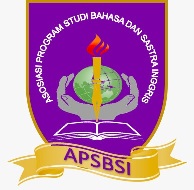PRESIDENT JOKO WIDODO’S INTERPERSONAL STRATEGIES IN HIS SPEECH IN THE 2014 APEC CEO SUMMIT
Abstract
This study aims at describing the way President Widodo used his interpersonal strategies in his speech in the 2014 APEC CEO SUMMIT. In this study, the discussion was limited by finding out the interpersonal meaning of the speech which can be used to dig up speaker’s hidden meanings through what he is saying in the speech. This is a descriptive qualitative study. The concept of discourse analysis from the perspective of Systemic Functional Linguistic (SFL) is employed as a tool to reveal the hidden motivations behind a text. The analysis reveals that in terms of context of situation, President Widodo delivered persuasive speech. Meanwhile, grammar analysis shows that President Widodo was delivering speech in the name of Indonesia and in the name of Indonesian people who need a lot of economic capital in order to achieve the economic goals of Indonesia. In delivering his speech, President Widodo also strongly believed that he would be able to reach his goals. The appraisal analysis shows that Appreciation is the most frequent appraisal devices used in the speech. In that sense, President Widodo’s stance or attitude towards the goals he wants to achieve is strongly positive. It can be concluded that by the elaborate use of interpersonal strategies, President Widodo successfully projects his ideas and messages to the audience and also build a persuasive speech.References
Ayoola, M.O. 2013. An Interpersonal Metafunction Analysis of Some Selected Political Advertisements in Some Nigerian Newspapers. Special Issue, 3/8. Pp. 165 – 178.
Celce-Murcia, M., et al. 1995. Communicative Competence: A Pedagogically Motivated Model with Content Specification. In Issues in Applied Linguistics .Vol. 6 No. 2. 1995. NSW: NCELTR.
Coulthard, M. 1997. An Introduction to Discourse Analysis. England: Longman.
Creswell, J.W. 1994. Research Design: Qualitative and Quantitative Approaches. United States of America: SAGE Publications, Inc.
Cushman, D.P and Cahn D.D. 1985. Communication in Interpersonal Relationship. New York: State University of New York, Albany
Davies, A. and Elder, C. (Ed). 2004. The Handbook of Aplied Linguistics. Oxford: Blackwell Publishing Ltd.
Denzin, Norman K. and Lincoln, Yvonna S. 1994. Handbook of Qualitative
Research. California: SAGE Publication.
Eggins, S. 1994. An Introduction to Systemic Functional Linguistics. London: Pinter Publisher Ltd.
Eggins, S. and D. Slade. 1997. Analysing Casual Conversation. London: Cassell.
Farch, C. And Kasper, G. 1984. Strategies in Interlanguage Communication. New York: Longman Inc.
Gerot, L. and Wignell, P. 1994. Making Sense of Functional Grammar. Australia: Gerd Stabler.
Halliday, M.A.K. and Hasan, R. 1985. Language, Context, and Text: Aspects of Language in a Social-Semiotic Perspective. Victoria: Deakin University.
Halliday, M.A.K. 2004. An Introduction to Functional Grammar. 3rd Ed, revised by C. M.I.M. Matthiessen. London: Arnold.
Heigham, J. And Croker, R.A. 2009. Qualitative Research in Applied Linguistics: A Practical Introduction. United Kingdom: Palgrave Macmillan.
Hyland, K. 2005. Metadiscourse: Exploring Interaction in Writing. London & New York: Continuum.
Lucas, Stephen E. 2004. The Art of Public Speaking. Boston: McGraw-Hill.
Martin, J.R., Matthiessen, C.M.I.M, and Painter, C. 1997. Working With Functional Grammar. Great Britain: Arnold.
Martin, J.R and Rose, D. 2003. Working with Discourse: Meaning Beyond the Clause. Semarang: Semarang State University.
Martin, J.R and P. R. R. White. 2005. The Language of Evaluation; Appraisal in English. New York; Palgrave Macmillan.
McCarthy, M. 1993. Discourse Analysis for Language Teachers. Cambridge: Cambridge University Press.
Nan, Y. and Liu, L. 2013. Investigating the Interpersonal and Textual Meaning of Steve Jobs’ Stanford Speech in Terms of Hyland’s Metadiscourse Theory. International Journal of Language and Linguistics. 1/ 4. Pp. 90-96.
Nunan, D. 1993. Introducing Discourse Analysis. University of California; Penguin English.
Sugiyono. 2013. Metode Penelitian Pendidikan: Pendekatan Kuantitatif, Kualitatif, dan R&D. Bandung: Alfabeta.
Suharso. 2006. Qualitative Research: A Compilation of Materials. Jogjakarta: Universitas Negeri Yogyakarta.


_.jpg)
_.jpg)




